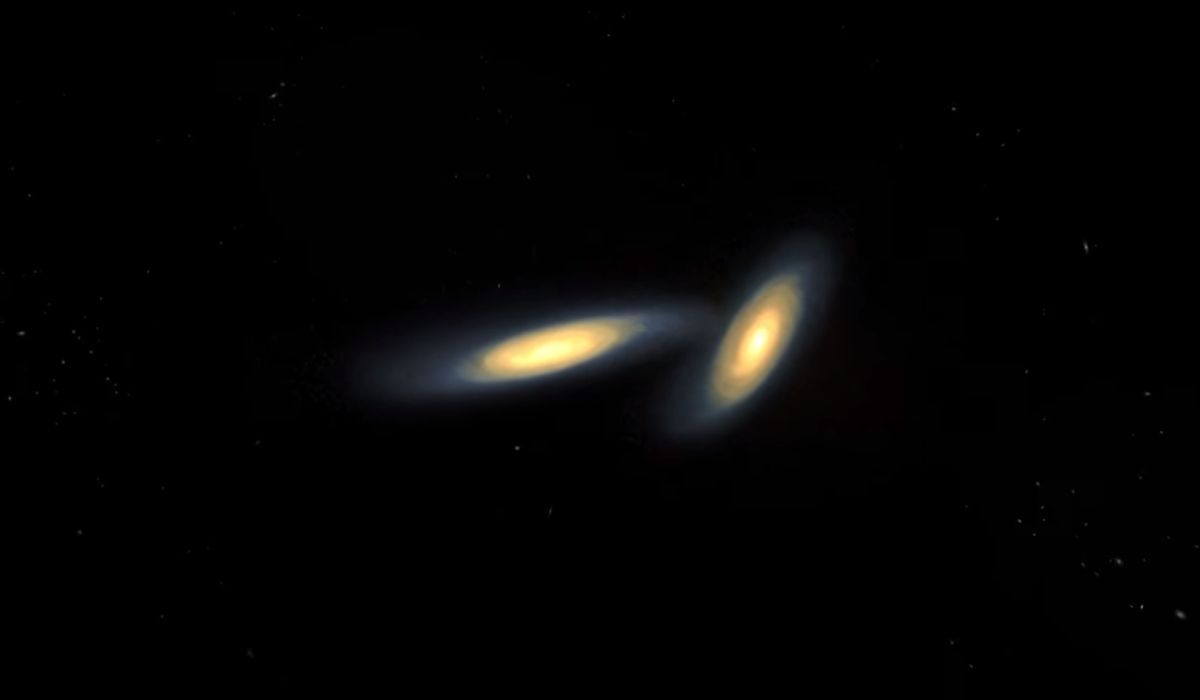While we often think of the sun as the ultimate scorcher, when it comes to the universe’s temperature charts, our sun doesn’t even come close. So, where’s the hottest spot in the vast cosmos?
Daniel Palumbo from Harvard University’s Black Hole Initiative breaks it down for us: “If you’re talking sizzling hot, look no further than the vicinity of a supermassive black hole – especially the ones that are munching away on gas.” The ones that spit out enormous beams of material at nearly the speed of light? Those are particularly fiery, Palumbo points out.
Read More: Maisie’s Galaxy
The current record-holder for the universe’s hottest spot? That would be the quasar 3C273, which is basically a super-bright area near a supermassive black hole, some 2.4 billion light-years from us. According to the Greenbank Observatory, the core of this region heats up to a whopping 10 trillion kelvin! That’s equally scorching in Fahrenheit and Celsius. But, Palumbo adds a cautionary note, suggesting there’s a bit of debate about that precise temperature.
Now, let’s talk about these supermassive black holes for a sec. They’re like the universe’s heavyweights, lounging at the centers of almost all galaxies. And yes, they’re massive. Take Sagittarius A* for instance – the big guy at the heart of our own Milky Way – it’s got a mass that’s millions of times that of our sun! And a fun (or terrifying) fact about these black holes like quasar 3C273: they’ve got such an intense gravitational pull that absolutely nothing, not even light, can break free from them.
Black holes are truly the universe’s paradox. While they’re incredibly cold inside, the gas rings spinning around them, known as accretion disks, are a completely different story. Due to molecules hurtling towards the black hole at breakneck speeds and smashing into each other, these disks can get insanely hot. Just imagine temperatures soaring to trillions of degrees Celsius, while our sun’s surface is merely a warm 10,000 degrees Fahrenheit (5,500 degrees Celsius)! And things get even hotter when a black hole’s fierce magnetic field flings some of that gas into space, creating what’s called relativistic jets, says Daniel Palumbo.

Yet, Koushik Chatterjee, another expert from the Black Hole Initiative, says that if you’re looking for the universe’s hottest ‘event’, timing is everything. While black holes maintain a consistently high heat, the real temperature spikes happen during cataclysmic events. Think about two enormous celestial bodies, like neutron stars, smashing into each other. Such a collision could send temperatures skyrocketing to 1.5 trillion F (800 billion C), as one 2019 study in Nature Physics revealed. And when a black hole decides to dance with a neutron star? The heat from that encounter is also through the roof. But these cosmic firecrackers? They’re often short-lived.
Read Also: Spaceship Neptune
Now, pinpointing the universe’s single hottest point is tricky. As Palumbo cheekily puts it, “You can’t just stick a thermometer into a black hole.” Instead, scientists have to get a bit crafty. By studying the light, radio waves, and X-rays given off by supermassive black holes, they can make educated temperature guesses, leaning on models that consider the various wavelengths of the emitted electromagnetic radiation. It’s a world of estimations, but these cosmic detectives are getting better and better at their game.
Ever wondered how scientists measure the temperature of far-off cosmic objects? Richard Kelley, a NASA senior scientist focused on solar studies, shed some light on the topic during a chat with Live Science. He explained, “Instead of us going to those distant objects, their light comes to us. It travels down into our telescopes and hits a sensor which deciphers the energy or wavelength of that light. From this, we can build a spectrum, and then, by diving deep into that spectrum, we can guess the temperature.”
There’s exciting news on the horizon too. Kelley mentioned a future project, the X-ray Imaging and Spectroscopy Mission (XRISM). This new observatory is designed to give a clearer picture of high-temperature gases floating in space. And as technology continues to evolve, who knows? We might find places even toastier than the current record-holder, quasar 3C273.
Palumbo chimed in on this, saying, “While our current tools for gauging temperatures around supermassive black holes have their limitations, things are quickly advancing.” So, stay tuned, because the universe still has many secrets waiting to be unveiled!




























